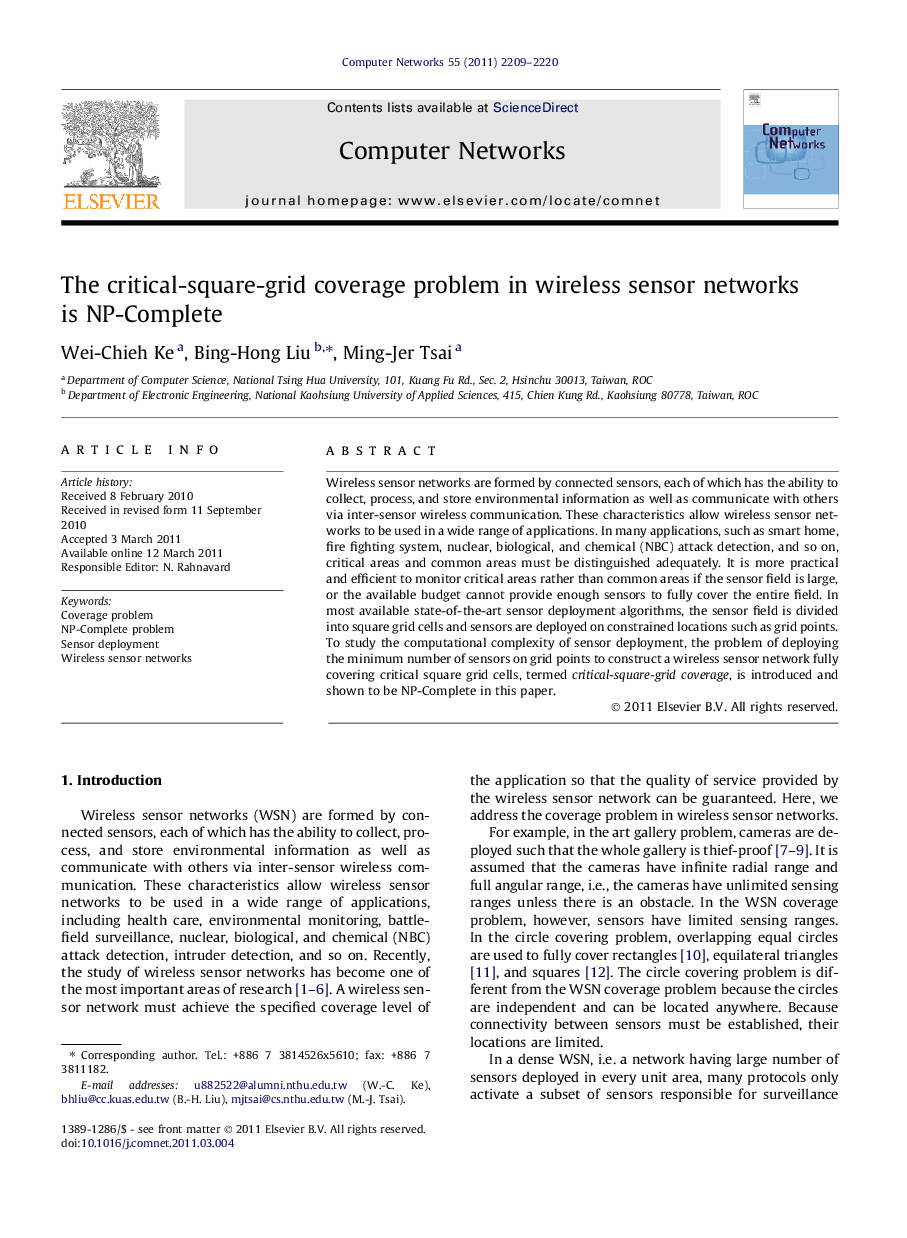| Article ID | Journal | Published Year | Pages | File Type |
|---|---|---|---|---|
| 450981 | Computer Networks | 2011 | 12 Pages |
Wireless sensor networks are formed by connected sensors, each of which has the ability to collect, process, and store environmental information as well as communicate with others via inter-sensor wireless communication. These characteristics allow wireless sensor networks to be used in a wide range of applications. In many applications, such as smart home, fire fighting system, nuclear, biological, and chemical (NBC) attack detection, and so on, critical areas and common areas must be distinguished adequately. It is more practical and efficient to monitor critical areas rather than common areas if the sensor field is large, or the available budget cannot provide enough sensors to fully cover the entire field. In most available state-of-the-art sensor deployment algorithms, the sensor field is divided into square grid cells and sensors are deployed on constrained locations such as grid points. To study the computational complexity of sensor deployment, the problem of deploying the minimum number of sensors on grid points to construct a wireless sensor network fully covering critical square grid cells, termed critical-square-grid coverage, is introduced and shown to be NP-Complete in this paper.
